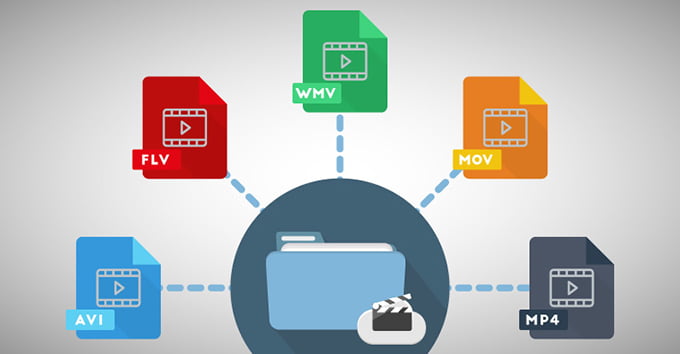Why Video Formats Are Important – And What They Do?
 Unless you have experience creating or editing videos, you probably have mostly ignored the format that your videos are in. In fact you may even feel that it isn’t that important – which isn’t true.
Unless you have experience creating or editing videos, you probably have mostly ignored the format that your videos are in. In fact you may even feel that it isn’t that important – which isn’t true.
The fact of the matter is that video formats do have an important part to play, despite frequently being ignored. By understanding why they are important and what they do, you may even be able to improve your video files in various ways.
“What Are Video Formats?”
The easiest way to think of video formats is as a file format that is used to store the data that makes up a video. In order to do that the video format needs to consist of (at least) two parts:
- A video codec that is used to compress the video data and so that it can be stored more efficiently. Some of the more common video codecs in use nowadays include H.264 and HEVC.
- A video container that holds together the different types of data that make up the video, including the video codec and data, as well as audio codec and data. Some of the more common containers are AVI, MP4, MKV, and MOV.
Because both these parts are required, a video format is often a standardized pairing between them.
Importance of the Video Format
Between the container and codec, the video format is responsible for several different roles. In particular it will affect the:
- Video compression
Without compression the data that is required by videos is simply too large to be practical. In fact in order for videos to be distributed to end users, lossy compression that discards redundant data is often required.
The video codec is solely responsible for compressing the video. Because some codecs have more efficient compression, it can affect the file size and quality of the video.
- Compatibility
For videos that are compressed into a format to be watched they need to be decompressed (i.e. decoded). That can be done using either software or hardware decoders that must be present on the device that is being used to view the video.
If a video format that is not supported by the device is used, it won’t be able to be decoded and played. On some devices it may be possible to download the decoding software that is required in a codec pack or specialized media player – but that is not always the case.
- Additional data
Aside from the video and audio data, the container format that is used will determine what other data can be stored. Some of the more common types of additional data that are often included in video files are captions, menus, chapters, and so on.
Most of the popular current containers such as MP4 and MKV support multiple streams of additional data, but many older containers do not.
Conclusion
Now that you can see what video formats are important and what they actually do – it should be easy to appreciate why you may want to convert the video format in some cases.
That can be done using Online Video Converter if you ever have the need to convert MOV to MPEG free of charge. It won’t require you to make any purchase or download any software as it is a web-based app, and you can upload and convert videos of any size that you require.
Just be sure that you choose the right video format, and take into account the ways in which it will affect your video. If you do you should end up with one that is a better fit for the way in which you want it to be used.